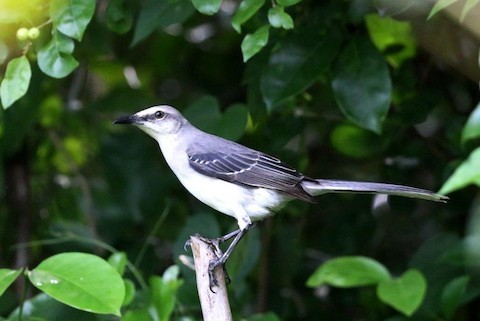Birdfinding.info ⇒ The San Andrés endemic form of Tropical Mockingbird is common throughout its small range, an isolated land mass of 10 square miles. Reliable sites include Old Point, Big Pond, and the San Andrés Botanical Garden.
“San Andrés Mockingbird”
Mimus gilvus magnirostris
Endemic to Isla San Andrés (Colombian territory in the southwestern Caribbean Sea about 110 miles east of the Nicaraguan coast), where it occurs in semiopen habitats.
Occasional records of Tropical Mockingbirds from Isla Providencia (31 miles north of San Andrés) seem more likely to result from dispersal of this form than from any other source.
Identification
Essentially identical to other forms of Tropical Mockingbird, but averages about 10% larger, often with a disproportionately long and heavy bill—although its bill size appears to vary widely.
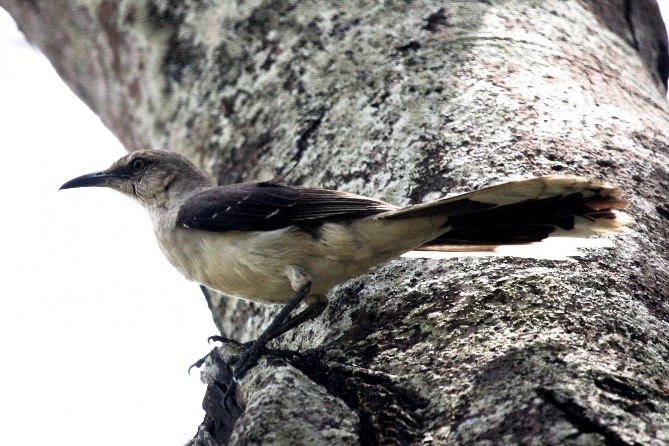
“San Andrés Mockingbird”, M. g. magnirostris, showing the length of its bill in profile and broadly white-tipped undertail. (Isla San Andrés, Colombia; April 6, 2012.) © Mauricio Rueda
The upperparts are typically pale-gray with contrasting blackish wings and tail. The underparts are whitish and mostly unmarked—but some have a few sparse blackish streaks on the flanks.
The tail is mostly black with narrow white outer edges and broad white corners that are visible mainly when it is spread.
Facial markings vary from bold to subtle: a blackish eyestripe and whitish eyebrow. The bill is black, slightly curved, and averages proportionately long and thick compared to other Tropical Mockingbirds.

“San Andrés Mockingbird”, M. g. magnirostris, showing the distinctive length and thickness of its bill. (Isla San Andrés, Colombia; October 15, 2014.) © Félix Uribe
Immatures are usually browner or buffier than adults and have fine dark spots on the chest and flanks.
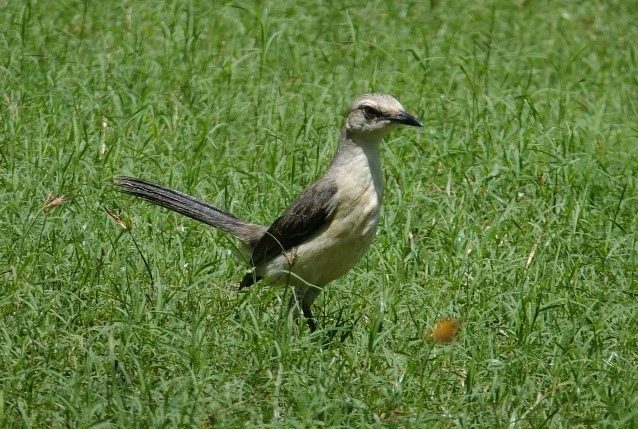
“San Andrés Mockingbird”, M. g. magnirostris. (Isla San Andrés, Colombia.) © juliomario
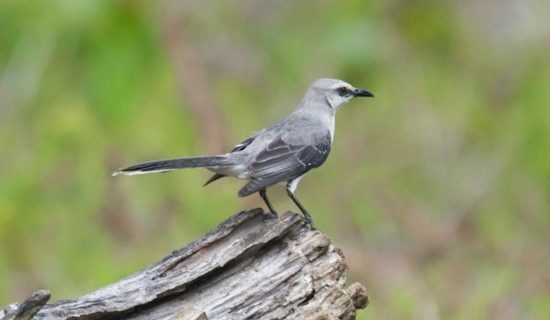
“San Andrés Mockingbird”, M. g. magnirostris. (Big Pond, Isla San Andrés, Colombia; April 27, 2014.) © Jan Cubilla
Notes
Monotypic form of Tropical Mockingbird (gilvus) that was formerly classified as a separate species.
Additional Photos of “San Andrés Mockingbird”
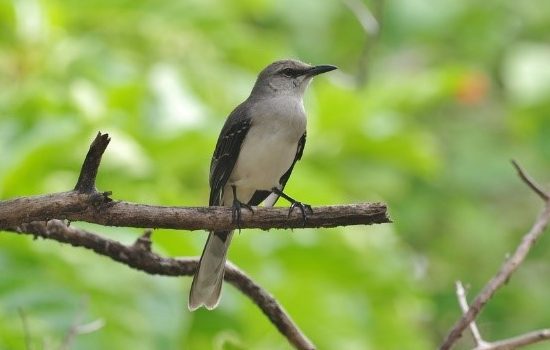
“San Andrés Mockingbird”, M. g. magnirostris. (Isla San Andrés, Colombia; May 12, 2018.) © Thibaud Aronson
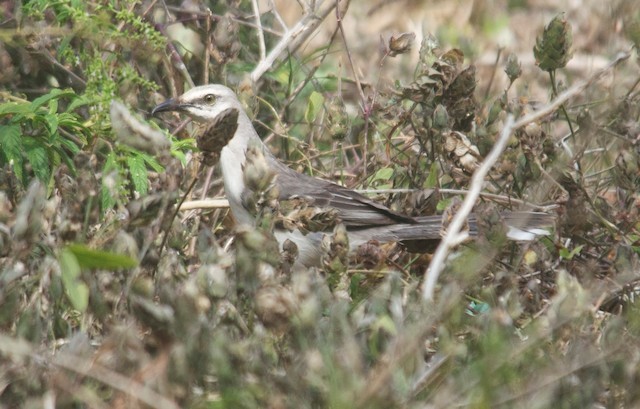
“San Andrés Mockingbird”, M. g. magnirostris. (Big Pond, Isla San Andrés, Colombia; April 27, 2014.) © Jan Cubilla
References
BirdLife International. 2020. Mimus gilvus. The IUCN Red List of Threatened Species 2020: e.T22711029A139345947. https://dx.doi.org/10.2305/IUCN.UK.2020-3.RLTS.T22711029A139345947.en. (Accessed December 27, 2021.)
Brewer, D., and B.K. MacKay. 2001. Wrens, Dippers, and Thrashers. Yale University Press. New Haven.
eBird. 2021. eBird: An online database of bird distribution and abundance. Cornell Lab of Ornithology, Ithaca, N.Y. http://www.ebird.org. (Accessed December 27, 2021.)
Kirwan, G.M., A. Levesque, M. Oberle, and C.J. Sharpe. 2019. Birds of the West Indies. Lynx Edicions, Barcelona.
Raffaele, H., J. Wiley, O. Garrido, A. Keith, and J. Raffaele. 1998. A Guide to the Birds of the West Indies. Princeton University Press, Princeton, N.J.
Xeno-Canto. 2021. Northern Mockingbird – Mimus gilvus. https://xeno-canto.org/species/Mimus-gilvus. (Accessed December 27, 2021.)
